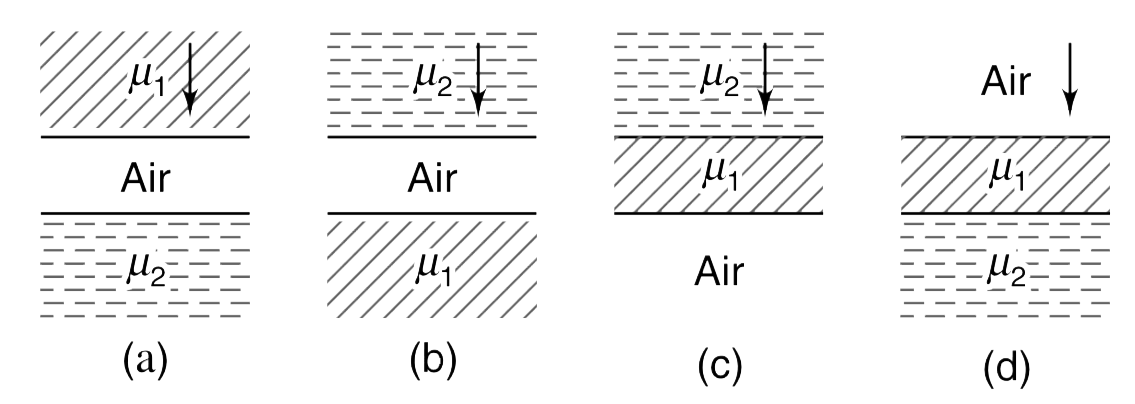Three media are arranged in various ways as shown in figures a, b, c and d. Light of wavelengthλ is incident perpendicularly on the boundary of the middle layer and interference between waves reflected at the boundaries of the middle layer is studied. In which of the four cases the reflected light is eliminated by destructive interference when the thickness of middle layer approaches zero.μ1=1.5 andμ2=1.8

The correct Answer is:a,b.
Step by step video, text & image solution for Three media are arranged in various ways as shown in figures a, b, c and d. Light of wavelength lambda is incident perpendicularly on the boundary of the middle layer and interference between waves reflected at the boundaries of the middle layer is studied. In which of the four cases the reflected light is eliminated by destructive interference when the thickness of middle layer approaches zero. mu_(1) = 1.5" and" mu_(2) = 1.8 by Physics experts to help you in doubts & scoring excellent marks in Class 12 exams.
Topper's Solved these Questions
Similar Questions
Knowledge Check
- Question 1 - Select One
Main function of middle layer is
AMechanical supportBProtectionCStorage of foodDDehiscence - Question 2 - Select One
Endothecium, middle layer and tapetum in anther are derived from :-
APrimary sporogenous cellsBPrimary parietal cellsCBothDNone of the above - Question 3 - Select One
A ray of light of wavelength λ is incident on mirror at an angle of incidence 60∘. The wavelength of light after reflection will be
A2λB3λCλ/2Dλ
Write the relationship between the path difference and the wavelength of light used for constructive and destructive interference of light.
View SolutionAn e.m. wave is travelling through a medium of refractive index μ1, and is incident on the boundary of a medium of refractive index μ2. IF the wave reflects at the boundary
View SolutionDuring Hoppes process for electrolytic refining of A1, the middle layer is of
View SolutionIn sponges, the middle layer in the body wall is called
View SolutionDuring Hoope's process for electrolytic refining of Al, the middle layer is of
View Solution

